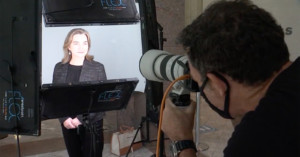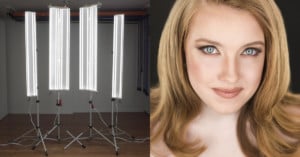
Why Headshots Taken by a Photographer Are Better Than AI
The creative behind an AI photo booth says that it is still best to get a headshot taken by a real photographer.

The creative behind an AI photo booth says that it is still best to get a headshot taken by a real photographer.

There is another AI photo app in town which promises to give users "perfect photos" of themselves. Artisse says it aims to make "personal photography accessible to everyone."

Generation Z are using artificially intelligent (AI) photo app Remini to transform their selfies into professional headshots and are questioning why they would ever pay for a photographer instead.

Social media users have started using artificial intelligence (AI) technology, to generate professional headshot photos for their Linkedin profiles.

Headshot photography is an exciting and lucrative niche in the photography industry, and if you're looking to make a name for yourself as a headshot photographer, this article is for you.

As far as my group of photographer friends is concerned, I am an oddity. Our studio operates 9-5, Monday through Friday, with no holidays and very little emotion involved. Specializing in headshots and commercial photography has its perks. No babies in buckets, no couches in fields, no wedding weekends.

Just about everyone feels some discomfort when posing for photographs. Whether they’ve never had a professional photoshoot before or stiffen up in front of the camera, getting the perfect shot can be difficult.

A one-day initiative that took place around the United States yesterday shows the impact photographers can have when they team up to make a difference. It's called "10,000 Headshots," and it involved booking and shooting free headshots for 10,000 unemployed Americans across the country in a single day.

RGB LEDs are a relatively new piece of technology, and a wonderful addition that photographers should be taking advantage of. Before this technology existed, we were forced to resort to adding gels to our strobes in order to add a pop of color into our images. This worked well (and still does) but having the ability to change the hue and saturation of your lights with the flip of a switch or turn of a dial is incredibly useful.

A company called Icons8 has just released "a massive free resource of 100k faces generated from scratch" using an AI algorithm trained on tens of thousands of real-life portraits. The resulting headshots can be used by anybody, royalty free, without worrying about model releases or other stock photography issues, since a fake person can't exactly sue you.

You don't need a ton of lighting gear to capture great portraits—a single strobe or speedlight will do. Don't believe us? Check out this simple and informative tutorial by Joe Edelman.

Buying a professional portrait lighting setup like the much-loved Kino Flo lights is just not within everybody's budget, especially if you want LEDs. But you can actually build a reasonable alternative for just a couple hundred bucks and about an hour of manual labor.

About a week ago, Winnipeg-based photographer Tristan Shea Penner made quite a splash in the DIY world by releasing the above video about his DIY alternative to the Kino Flo lights that iconic headshot photographer Peter Hurley uses. People were intrigued by the quality of the portraits Penner was getting with his rig, while managing to keep it semi-portable at the same time. The only problem was that the video didn't get specific on how to build the rig for yourself, so Penner put together a full set of instructions that he's now posted on his website.